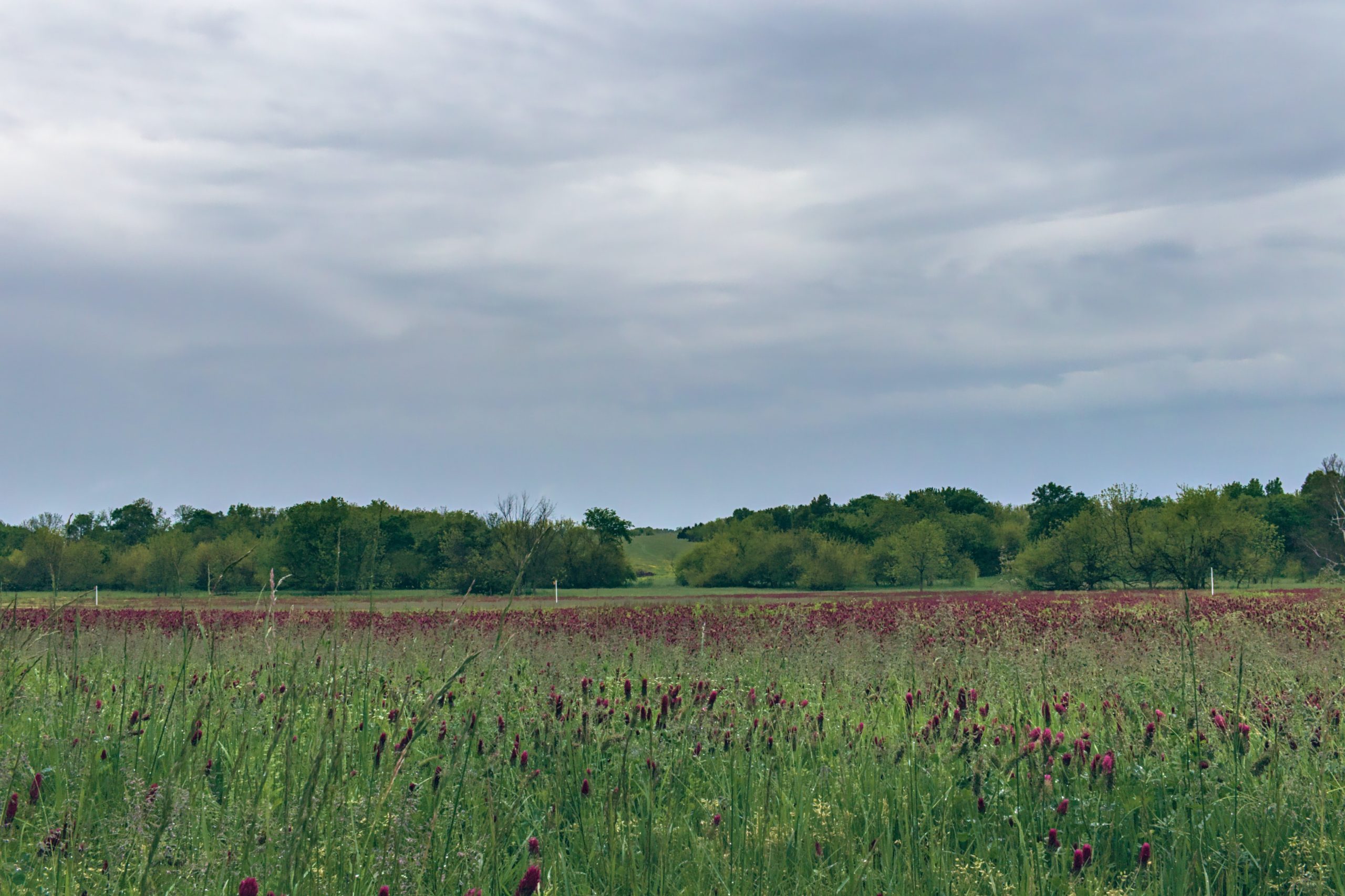Clover—it’s not just a pesky “weed” in your turf grass meant to be removed. Clover is actually incredibly important to your garden.
While clover is most popularly used as a winter cover crop, it also offers several other benefits—no matter if you live on a small homestead or a sprawling multi-acre farm.
Keep reading to learn the 5 reasons you need to plant clover on your homestead or farm.
1. Winter Crop Cover
Bears might hibernate, but your soil shouldn’t.
Allowing your soil to lie fallow over winter does your spring garden no favors—it puts the soil at risk for erosion from winter rains, topsoil loss from high winds, and nutrient-deficiencies.
This is where you need to put to work cover crops—also called “green manure” because it adds organic matter back into the soil.
Crimson clover is an excellent choice of winter cover crop, and is our go-to cover at Stoney Creek Farm.
It grows quickly and forms a dense layer to keep weeds away over winter. Not only does its root system prevent erosion, but it also keeps nutrients from running off and allows more rainwater to seep deeper into the soil.
During the fall season, we plant crimson clover over the entirety of our garden. Then, before the flowers come up in the springtime, we till the plants back into the soil, adding in great nutrient-rich organic matter.
2. A Replacement for Synthetic Nitrogen Fertilizer
Your plants need nitrogen in the soil.
Let’s take it back to science class… why is nitrogen in the soil so important for your plants’ health?
Nitrogen is a component of chlorophyll—a compound used in the photosynthesis process. Nitrogen is also a component of amino acids, the building blocks of proteins that plants need to thrive.
But nitrogen is a gas… so how does it get in the soil?
Enter stage left: clover.
Clover adds nitrogen back into the soil by capturing it from the atmosphere and fixing it within its roots, known as nitrogen fixation. When clover is tilled back into the soil, a portion of the roots die and release the nitrogen that has been collected within its root system. To add the most nitrogen back into the soil, till your annual clovers when they are fully flowered, but prior to seeds forming.
There are a variety of clovers with different growing seasons. White clover, red clover, and crimson clover are all great options for adding nitrogen back into your soil.
No synthetic nitrogen fertilizers necessary when clover can do the job for you. This is important for sustainable gardening, given the number of harmful side effects researchers are discovering in applying synthetic nitrogen to soil.
3. Better Forage Quality for Livestock (and Wildlife)
Livestock owners, listen up. Clovers are legumes, high in protein and more easily digestible than other grasses. They are a great option for cattle grazing prior to flowering, allowing it to still play double duty by adding nitrogen back into the soil.
Additionally, clover provides food for wildlife like deer, rabbits, and birds.
4. Attracts Beneficial Insects
Besides soil, you know who else loves clover? Bees and other beneficial insects like pirate bugs that keep “bad” bugs at bay.
[RELATED READING: Pesticide-Free Garden Protection: 12 Beneficial Insects to Control Pests]
Flowering clover provides pollen and nectar for all those “good” bugs that we want to keep around our garden. Crimson clover in particular has beautiful red blossoms that are rich in nectar—a particular fan favorite of honey bees.
Consider leaving a patch of flowing clover available through the spring and summer months to invite beneficial insects to stick around your garden.
5. More Colorful Pastures
And finally, to the pasture folk out there—blooming crimson clover offers a wave of color that you just can’t find by only planting grasses in your pastures.


